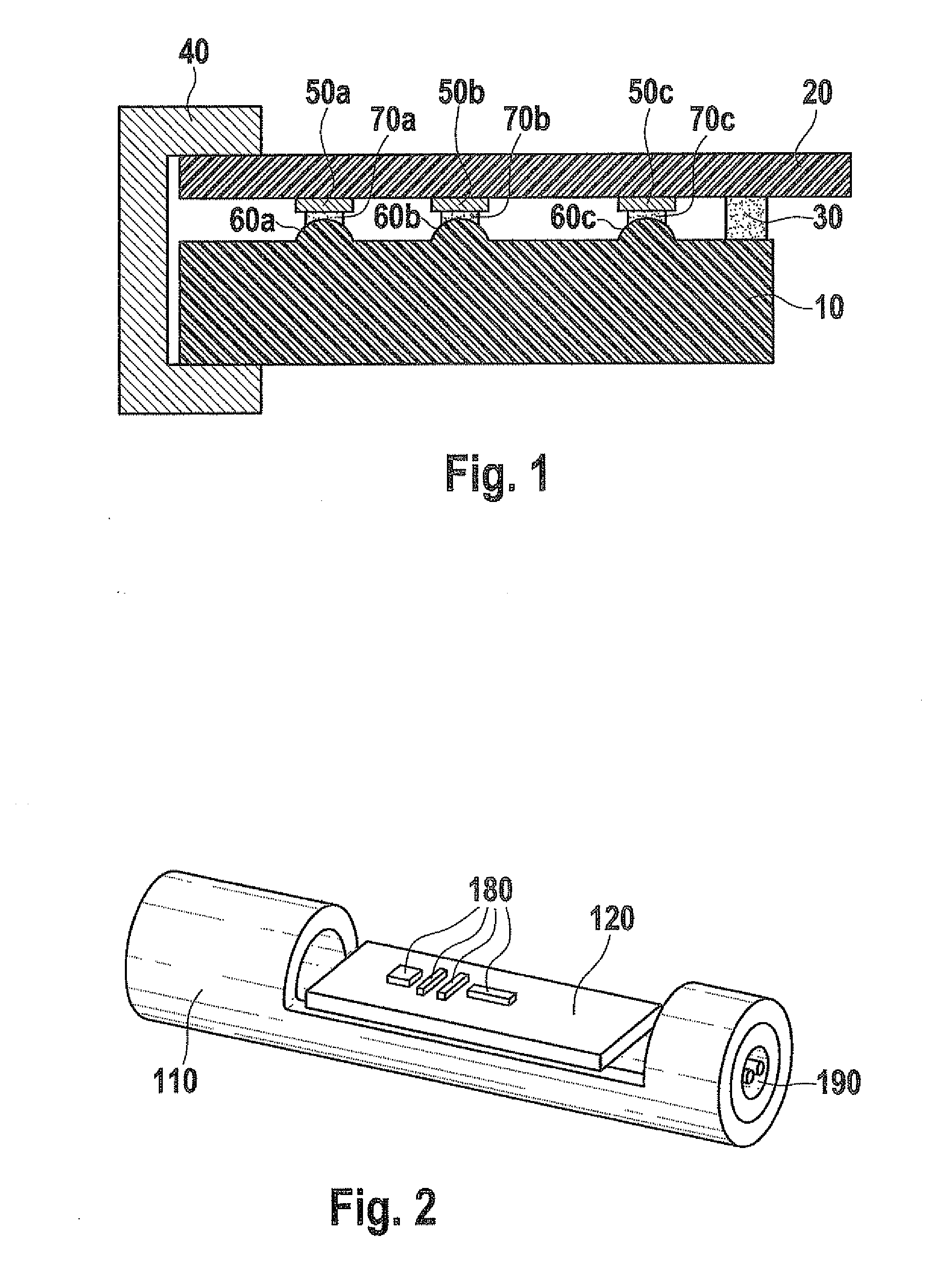Electric circuit configuration having an mid circuit carrier and a connecting interface connected to it
a technology of connecting interface and circuit configuration, which is applied in the direction of fixed connection, coupling device connection, printed circuit aspect, etc., can solve the problem of limited fashion of through-hole plating, and achieve the effect of high interconnection configuration density and high component density
- Summary
- Abstract
- Description
- Claims
- Application Information
AI Technical Summary
Benefits of technology
Problems solved by technology
Method used
Image
Examples
Embodiment Construction
[0025]FIG. 1 shows an electric circuit configuration which includes a planar connecting interface 20 and an MID circuit carrier 10. Connecting interface 20 is connected to MID circuit carrier 10 via three individual contact pairs P, each contact pair producing a single electrical connection, which is separate from the electrical connections of the other electric contact pairs P. In FIG. 1, connecting interface 20 is developed by an insulating carrier or by a substrate and a copper outer layer situated on it, which form a printed circuit board. The copper outer layer forms contact areas or pads, which may be developed in one part with printed circuit boards (not shown).
[0026]Each electric contact pair includes a connecting interface contact element, an electrical contact element which includes conductive material, for example, conductive adhesive material, as well as MID contact elements 60a-c. The electrical connecting element, which in FIG. 1 is made of a conductive adhesive materi...
PUM
 Login to View More
Login to View More Abstract
Description
Claims
Application Information
 Login to View More
Login to View More - R&D
- Intellectual Property
- Life Sciences
- Materials
- Tech Scout
- Unparalleled Data Quality
- Higher Quality Content
- 60% Fewer Hallucinations
Browse by: Latest US Patents, China's latest patents, Technical Efficacy Thesaurus, Application Domain, Technology Topic, Popular Technical Reports.
© 2025 PatSnap. All rights reserved.Legal|Privacy policy|Modern Slavery Act Transparency Statement|Sitemap|About US| Contact US: help@patsnap.com


